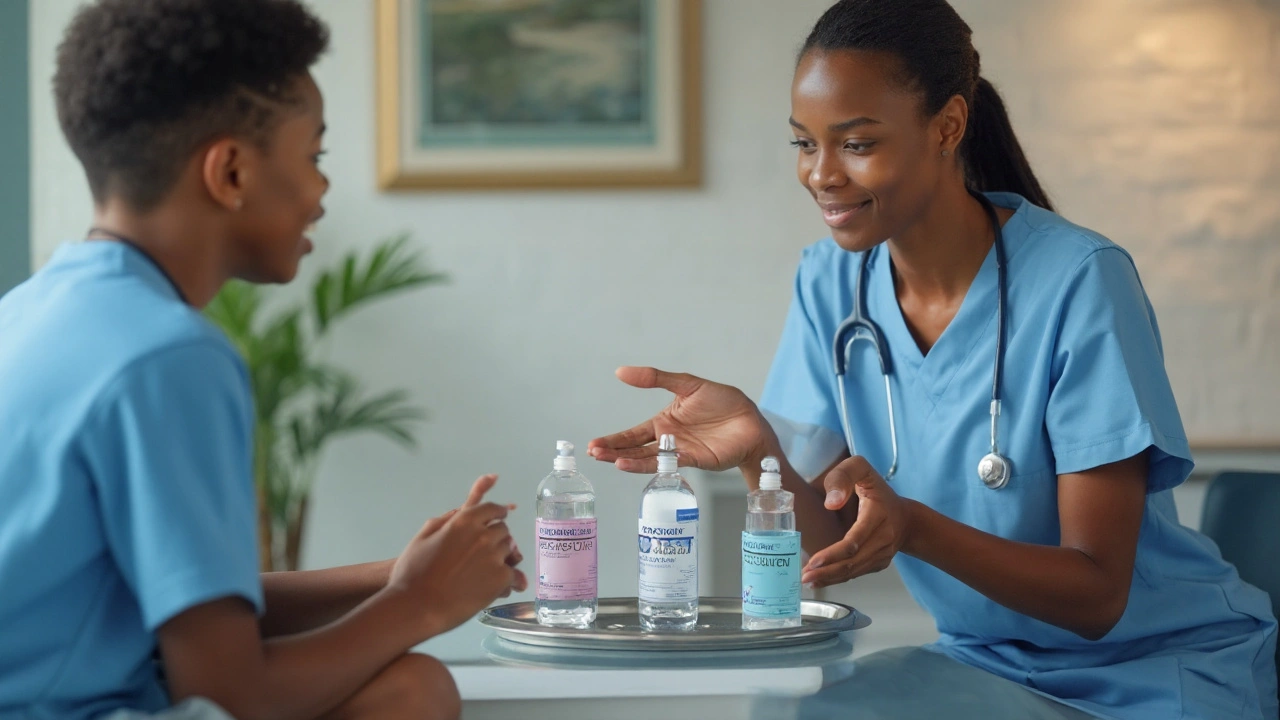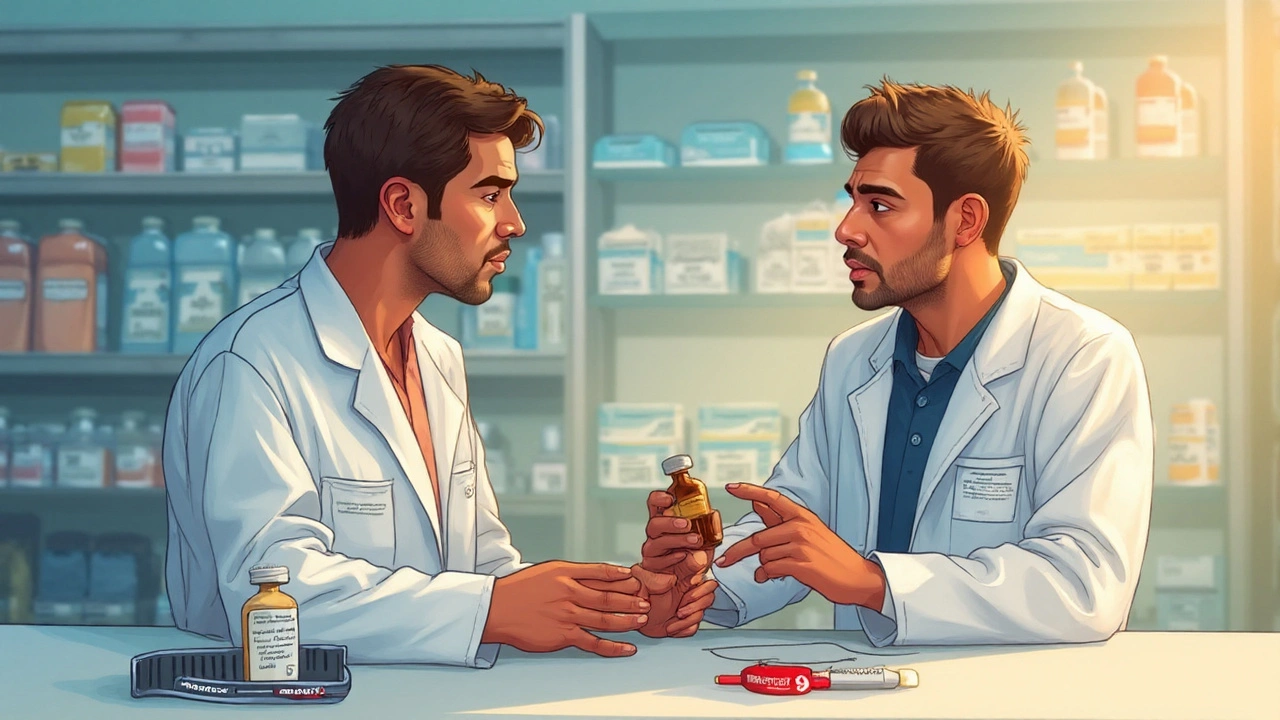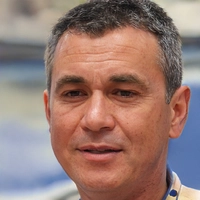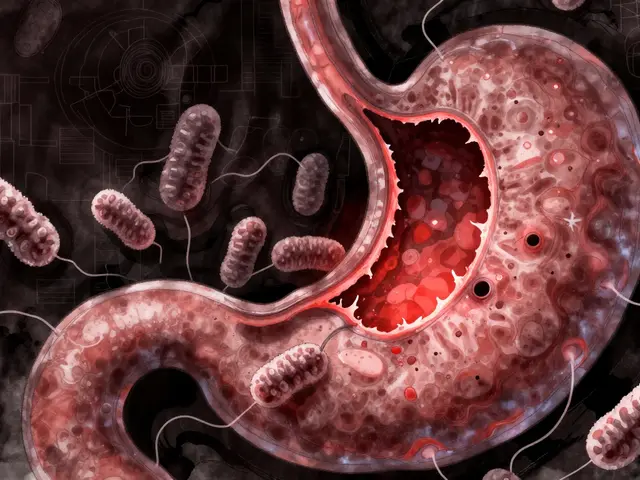
The brown bottle in the first-aid box looks reassuring, but it can also be confusing. Use too little and you might miss a brewing infection; use too much or at the wrong time and you could slow healing. If you’re wondering where povidone-iodine fits in your wound care routine, here’s a straight, practical guide that shows when it genuinely helps, when to skip it, and exactly how to use it safely.
TL;DR
- Best use: cleaning and reducing bacterial load in minor cuts, grazes, and contaminated wounds after you’ve irrigated with clean water or saline.
- Skip it for deep punctures, large burns, around eyes/ears, and if you have thyroid issues unless a clinician says otherwise. Don’t use on very large areas repeatedly.
- How: rinse, dab dry, apply a thin layer of 10% solution to the skin around and lightly over the wound, let it dry (~2 minutes), then dress. Once or twice daily for a short course.
- Evidence: broad-spectrum, fast kill; no long residual effect. For surgical skin prep, chlorhexidine-alcohol often wins; povidone-iodine-alcohol is a solid alternative if chlorhexidine isn’t suitable (NICE, WHO).
- Watch-outs: allergy-like rashes can be from the povidone carrier, not iodine; repeated wide-area use can affect thyroid, especially in babies. If redness, pain, or pus worsens after 48 hours, get medical advice.
What it is, how it works, and what the evidence says
Povidone-iodine (often labelled “PVP-I”) is a complex of iodine bound to a carrier called polyvinylpyrrolidone (povidone). The povidone holds iodine and releases it slowly into the wound environment. That slow release is the trick: it keeps antimicrobial activity going without the hard sting of old-school tincture of iodine.
What it hits: bacteria (including MRSA), many viruses, fungi, and some spores. It starts working quickly-lab studies show rapid kill within seconds to a couple of minutes-though the exact time depends on the microbe and the organic load in the wound.
What it doesn’t do: it doesn’t stick around on skin with long “residual” activity the way chlorhexidine does. Once it dries and the available iodine is used up, the effect tapers off. That matters when you’re deciding between agents for pre-surgery skin prep versus day-to-day wound care.
Common forms you’ll see:
- 10% solution (roughly 1% available iodine): standard brown liquid for skin and minor wounds.
- Scrub/foam solutions: for pre-op skin cleaning; not usually needed at home.
- Ointments/gels (e.g., 5%): handy under a dressing to keep a low-level antiseptic effect.
- Swabsticks: single-use convenience for travel kits.
What do guidelines say? For surgical skin prep, UK NICE recommends alcohol-based chlorhexidine first-line; if it’s not suitable, alcohol-based povidone-iodine is recommended. WHO surgical site infection guidance says the same. For everyday cuts and grazes, NHS first aid guidance prioritises thorough cleaning with water or saline; an antiseptic like povidone-iodine can be used briefly to lower bacterial load, especially if the wound was visibly dirty.
Does it slow healing? Older concerns came from high-concentration iodine or repeated, wide-area use that can irritate tissue. Modern povidone-iodine, used for a short period on minor wounds, hasn’t shown meaningful delays in healing and can reduce infection risk in contaminated wounds in clinical studies. The key is targeted, short-term use, not daily soaking for weeks.
When to use it-and when to avoid it
Use povidone-iodine when your goal is to cut bacterial load after cleaning, especially if the wound was contaminated (grit, soil, dirty tool) or sits in a spot that’s hard to keep clean (knees, shins, around nails).
Good use cases:
- Minor cuts and grazes after rinsing out debris.
- Superficial lacerations you’ll dress at home (not gaping or needing stitches).
- Shallow abrasions from sport or outdoor work.
- Around stitches (if already placed) to clean surrounding skin-follow your clinician’s advice.
- Short-term management of contaminated superficial wounds while arranging medical review.
Use with caution or avoid:
- Deep punctures (e.g., nail through shoe), animal/human bites, crush injuries-these need medical assessment, possible antibiotics, and sometimes tetanus prophylaxis.
- Large or partial-thickness burns-cool with running water, cover, and seek care. Repeated iodine on big surfaces can be absorbed and affect thyroid.
- Near eyes, in ears with perforated eardrum, or deep in nose/mouth-risk of irritation and toxicity.
- In infants, during pregnancy, or if you have thyroid disease-use only with clinician guidance. Repeated topical iodine can alter thyroid function in vulnerable groups.
- If you’ve had a previous reaction to povidone-iodine (itchy rash, blistering) or severe dermatitis with it. True “iodine allergy” is a myth, but the povidone or other ingredients can trigger contact dermatitis.
Rules of thumb:
- If the wound edges won’t come together, it’s deeper than a few millimetres, or you can see fat or bone-get stitches or medical care first. Clean water, cover, and go.
- If it’s a clean, low-risk cut in a healthy person, irrigation plus a clean dressing often beats routine antiseptics.
- Suspect infection? (spreading redness, warmth, swelling, worsening pain, pus, fever) You need assessment, not just more antiseptic.

How to use povidone-iodine safely at home (step-by-step)
Gear checklist:
- Clean running water or sterile saline.
- Povidone-iodine 10% solution or ointment.
- Non-adherent dressing and tape or a breathable plaster.
- Clean tweezers (if you need to lift out grit) and disposable gloves if available.
Step-by-step for minor cuts and grazes:
- Stop the bleed. Apply gentle pressure for a few minutes with clean gauze or a cloth.
- Rinse the wound. Use running tap water or saline for a few minutes to flush away dirt. This step matters more than any antiseptic.
- Remove debris. If you see visible grit, lift it out with clean tweezers.
- Pat dry around the wound. Don’t rub the wound bed.
- Apply povidone-iodine. Paint a thin layer across the wound and surrounding skin. Let it air-dry for about two minutes (brown colour should remain).
- Dress it. Use a non-adherent pad or breathable plaster. Avoid heavy occlusion that traps moisture unless advised.
- Repeat once or twice daily for a day or two. If it’s clean and healing on day 2-3, switch to gentle cleansing only and let the skin rebuild.
Dilution tips:
- For delicate areas or if the wound stings, you can dilute 10% solution to ~1% using sterile saline (1 part povidone-iodine to 9 parts saline). This still provides antimicrobial action with less irritation.
- Don’t soak wounds in iodine baths. Short contact on a clean surface is enough.
Using ointment:
- A pea-sized amount under a dressing can keep things cleaner for the first 24-48 hours. Don’t cake it on. Reassess daily.
When to stop:
- Once the wound is clean, shallow, and shows pink granulation or closing edges, switch to simple cleansing and moisture-balanced dressings. More antiseptic won’t speed things up.
Storage and shelf-life:
- Keep bottles capped, away from heat and sunlight. Many products last 2-3 years unopened; after opening, aim to use within 6 months or follow the label.
- Colour check: if it no longer stains brown, the iodine is likely spent-time to replace.
Stains and surfaces:
- Skin stains fade with washing. For fabrics, cold water first, then washing-up liquid or an oxygen-based stain remover.
Safety pairing:
- Don’t mix with hydrogen peroxide or silver products at the same time-they can inactivate each other or irritate tissue. If you’re switching products, rinse with saline in between.
How it stacks up against other antiseptics (and when to choose what)
If you have options in your kit or clinic, here’s how povidone-iodine compares to common choices.
| Agent | Best for | Typical concentration | Pros | Cons | Avoid/Notes |
|---|---|---|---|---|---|
| Povidone-iodine (PVP-I) | Contaminated minor wounds; pre-op prep if chlorhexidine not suitable | 10% solution (≈1% available iodine); 1% diluted for delicate areas | Broad-spectrum, fast kill; less sting than tincture; cheap, widely available | No long residual activity; can stain; repeated wide-area use may affect thyroid | Avoid deep punctures/large burns; caution in infants, pregnancy, thyroid disease |
| Chlorhexidine (CHG) | Skin prep before surgery; catheter/line care | 2-4% in alcohol for skin; 0.05-0.1% aqueous for wounds | Strong residual effect; good against gram-positives | Less effective against some viruses/spores; rare but serious allergy possible | Keep away from eyes/ears (ototoxic); some dressings stain or degrade |
| Hydrogen peroxide | Initial fizz to lift debris (rarely needed) | 3% (often too harsh for tissue) | Mechanically lifts dirt via bubbles | Damages healthy tissue; slows healing if used repeatedly | Generally avoid on open wounds; not for routine wound care |
| Alcohol (isopropyl/ethanol) | Intact skin antisepsis | 60-70% | Rapid kill; dries quickly | Stings; tissue toxicity on open wounds | Don’t use inside open wounds; combine with CHG or PVP-I for skin prep |
| Normal saline | Wound irrigation and cleaning | 0.9% sodium chloride | Tissue friendly; no sting; removes debris well with volume | No antimicrobial effect | Often the best first step; pair with an antiseptic only when needed |
| Octenidine (where available) | Skin/mucosa antisepsis in some EU countries | 0.05-0.1% | Broad-spectrum; low irritation | Availability varies; some dressings interact | Follow local protocols and product guidance |
Quick decisions:
- Pre-surgery skin prep: chlorhexidine in alcohol if suitable; povidone-iodine in alcohol if not (NICE/WHO).
- Everyday grazes: clean with water or saline; a brief course of povidone-iodine helps if the wound was dirty.
- Kids and delicate skin: consider dilute povidone-iodine or just saline cleansing; keep use short.
- If you’re allergic to chlorhexidine: povidone-iodine is a common alternative.

FAQ, quick checklists, and troubleshooting
FAQ
- Is “iodine allergy” real? True iodine allergy isn’t a thing; iodine is essential for life. Reactions can happen to the povidone carrier or other formulation ingredients, or to iodinated contrast (a different compound). If you’ve reacted before to povidone-iodine, avoid it and talk to a clinician.
- Can it slow healing? Not when used briefly and sensibly on minor wounds. Overuse, high concentration, or daily soaks can irritate tissue.
- Can I use it on children? Yes for small, superficial wounds, in small amounts and for short periods. Avoid repeated wide-area use because babies and young children can absorb iodine more readily.
- Pregnancy or thyroid disease? Get advice first. Repeated topical iodine can alter thyroid function. Short, limited application on a tiny area might be acceptable, but check with a midwife, GP, or pharmacist.
- What if it doesn’t stain brown? The iodine may have degraded. Replace the bottle.
- Can I combine it with silver dressings or honey? Rinse between products. Don’t layer them at the same time unless a clinician tells you to.
- Does it kill viruses? Yes, laboratory data support activity against many viruses. For wound care, the main goal is preventing bacterial infection.
- How long should I keep using it? Usually 24-72 hours after injury while the wound is at highest contamination risk, then switch to gentle cleansing only.
Red flags that need medical attention:
- Spreading redness, warmth, throbbing pain, or swelling after the first 24-48 hours.
- Pus, a foul smell, or fever.
- Numbness, loss of function, or a wound that exposes deeper structures.
- Puncture wounds through shoes, animal or human bites, or contaminated farm/soil injuries.
- A wound that isn’t improving after 3-5 days, or any concern if you have diabetes, poor circulation, or are immunocompromised.
Quick home-use checklist:
- Rinse first with water/saline (1-3 minutes).
- Apply a thin layer of povidone-iodine; let it dry (~2 minutes).
- Cover with a breathable, non-adherent dressing.
- Change daily; stop iodine once the wound looks clean and calm.
- Watch for signs of infection; seek help if they appear.
For specific situations:
- Runner’s knee graze: flush grit out thoroughly; one or two days of iodine under a light dressing; then switch to simple cleansing and let it air when safe.
- Kitchen knife nick: if edges align and it’s shallow, clean, dab iodine, steri-strip if needed, and cover. If it gapes or bleeds heavily, get it assessed.
- DIY splinter wound: remove splinter fully, irrigate, a single iodine application, and monitor. Redness spreading the next day? Get advice.
- Diabetic foot scratch: clean, single iodine application, offload pressure, and low threshold for professional review.
Why your approach matters: Most wound infections are prevented by volume irrigation and good dressings. Antiseptics like povidone-iodine are add-ons for specific jobs-short bursts to knock down bacteria when a wound was obviously dirty. Use them that way and they serve you well.
Credibility notes: The recommendations here reflect major guidance from WHO and NICE on antiseptic choice for skin prep, and NHS advice for first aid. Clinical studies over the past decade show modern povidone-iodine used appropriately does not meaningfully delay healing of minor wounds and reduces bacterial counts in contaminated wounds. If your local protocol differs (hospital or clinic), follow it.







17 Comments
Just used this on my kid’s scraped knee after a bike fall. Rinsed with water first, dabbed on the 10% solution, let it dry. No crying, no burning, wound looked clean by morning. No need to overdo it-once is enough if you clean well first.
Wait, so you’re saying hydrogen peroxide is worse than useless? I’ve been using it since I was 12 because my mom said it ‘kills everything.’ Guess I’ve been poisoning my cuts for a decade. Thanks for the reality check.
So you’re telling me the brown bottle my grandma swore by is basically a glorified stain with a side of thyroid risk? I’m not even mad. Just disappointed. I used to dab it on my mosquito bites like it was magic fairy dust. Now I feel like I’ve been lied to my whole life.
Let me just say-I’ve read a lot of medical advice on Reddit, and this is the only one that doesn’t sound like it was written by a pharma rep trying to sell you a 12-pack of iodine swabs. Respect. Also, I’m never using peroxide again. Ever.
Okay but what if the WHO and NICE are just part of the iodine-industrial complex? Who funds these guidelines? Who profits from chlorhexidine? Why is povidone-iodine cheaper? Why does it come in a brown bottle that looks like it’s from 1978? I’m not saying it’s a conspiracy, but… have you ever looked at the ingredient list? Povidone? That’s not a word. That’s a chemical trap.
And don’t even get me started on ‘thyroid risk’-they say ‘avoid in pregnancy’ but never say how much is too much. Is one dab during a hike dangerous? Or is it only dangerous if you’re a 3-month-old in a rural clinic? The ambiguity is the real infection here.
I’ve been using it on my dog’s ear cuts. He’s fine. He licks it off. I’ve seen zero signs of thyroid weirdness. Maybe the real risk is fear-mongering? Maybe the real danger is trusting guidelines written by people who’ve never had a dog lick iodine off their wound?
Also, why does no one mention that the brown stain lasts longer than your ex’s emotional baggage? That’s the real side effect.
It’s not about whether it kills bacteria-it’s about what it says about us. We live in a culture that thinks every wound needs to be sterilized, sanitized, disinfected, and spiritually cleansed. We’ve forgotten that the body is a self-healing system. Povidone-iodine is just another tool of control-another way we’ve been taught to fear our own skin. The real wound isn’t the cut. It’s the belief that we need to ‘fix’ everything with chemicals.
Saline is the true healer. It doesn’t judge. It doesn’t stain. It doesn’t pretend to be a savior. It just… is. And maybe that’s the lesson here: sometimes, the best thing you can do is let go.
My cousin used this on her toddler’s scrape and now the kid has hypothyroidism they say it’s genetic but I know better. Iodine is poison. They’ve been hiding this for decades. You think they care about your cuts? They care about profits. Look at the price difference between this and saline. Who wins? The companies. Who loses? Us.
Good breakdown. I’m a paramedic and we use chlorhexidine for pre-op but I’ve seen povidone-iodine work wonders on dirt-covered abrasions in the field. Just don’t drown the wound in it. A thin layer and move on. And yeah, saline first-always.
Thank you for this! 🙏 I’ve been scared to use anything on my eczema-prone skin after a cut, but now I feel like I can finally use it safely if I dilute it. You made me feel less anxious about first aid. Seriously, this is the kind of info we need more of.
Did you know the FDA banned iodine in water purifiers because it causes thyroid cancer? And now they’re pushing it on your skin? Coincidence? I don’t think so. They want you to think it’s safe because it’s ‘topical’ but the skin absorbs everything. You think your liver can handle the buildup? Think again. They’re poisoning us slowly. Wake up.
Y’all in US talking about iodine like its some big science thing. In Nigeria we use it since 1980s. My uncle use it on snake bite. He live. You think you know better? You got too much time on your hands. Just use water and bandage like normal people.
Most people don’t realize that the real danger isn’t the iodine-it’s the overconfidence. You think you’re being careful because you used povidone-iodine but you skip the rinse, skip the dry, skip the dressing. That’s when infections happen. The product isn’t the problem. The mindset is.
oh my gosh i just read this and i realized i’ve been using it wrong for years. i just poured it on like a liquid bandaid 😭 thank you for this i’m gonna fix it now
Okay but why does it always stain your clothes? Like, is that intentional? Is this some kind of psychological warfare? ‘Here, use this antiseptic-it’ll ruin your favorite shirt.’
While the data presented here is statistically valid and aligns with current clinical guidelines from NICE and WHO, one must interrogate the underlying epistemological framework. The privileging of ‘evidence-based’ protocols over experiential or traditional knowledge systems reflects a colonial epistemic hierarchy. The use of povidone-iodine, while empirically supported, is still a product of pharmaceutical modernity-a paradigm that pathologizes natural healing processes. The suggestion that ‘short-term use’ is acceptable implies a false dichotomy between intervention and non-intervention. Is healing not already occurring? Is the wound not already communicating its needs? The very act of applying antiseptic is an assertion of control over the body’s innate intelligence. One might ask: who benefits from this narrative of constant medical management? The answer, as always, is the market.
OMG YES this is exactly what I needed! I’m a nurse and my hospital uses chlorhexidine but I’ve been telling my patients to use this for scrapes and they always ask if it’s safe. Now I have a legit guide to share. Also I’m telling my sister to stop using peroxide on her kids’ knees. She’s been doing it since 2015 😅
Also, if you’re using the ointment under a dressing-don’t go full mayo. A pea-sized amount for a quarter-sized wound is enough. I’ve seen people smear it like they’re buttering toast. It’s not a snack.